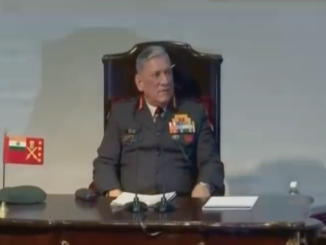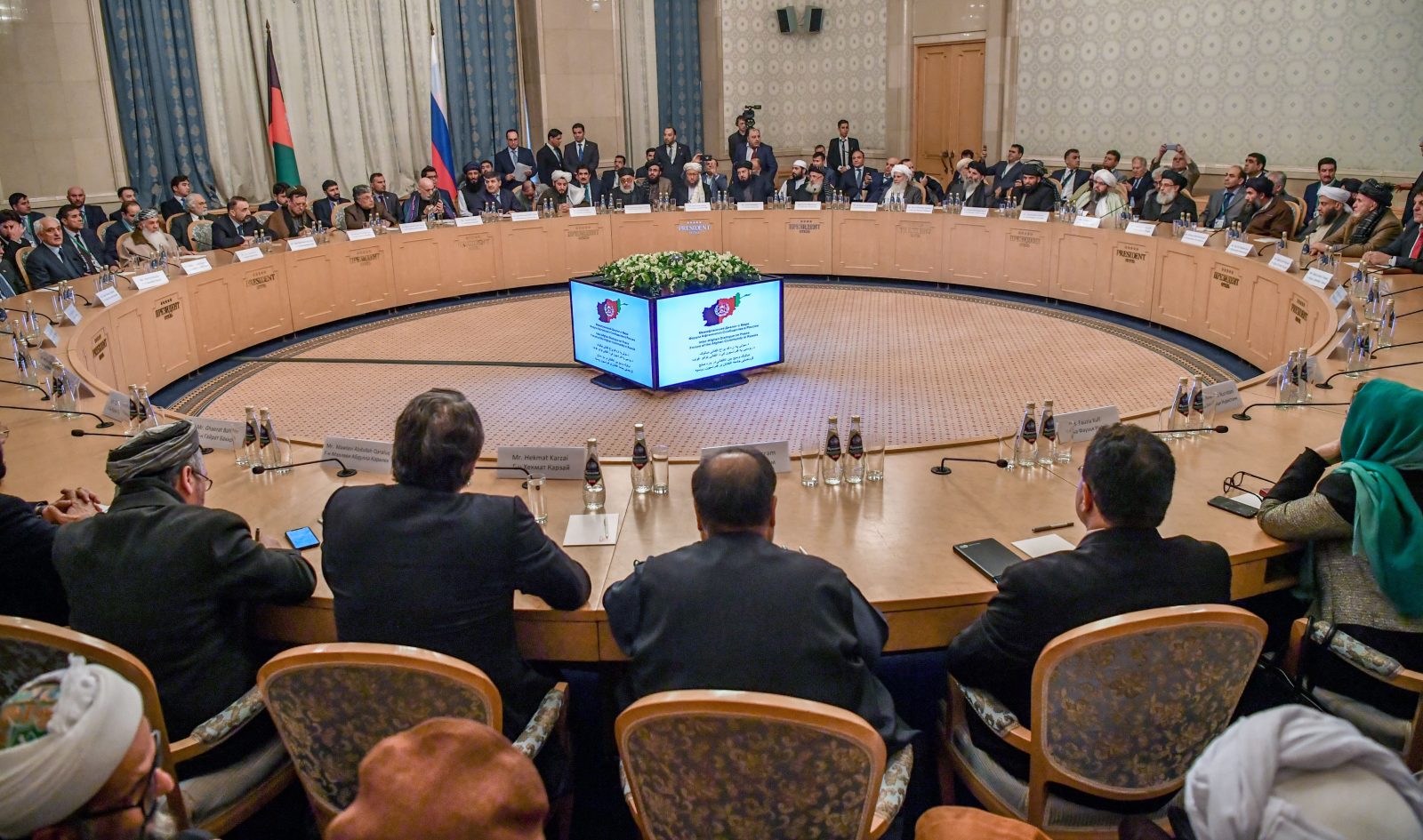 The Arms Control and Disarmament (AC&D) is under strain due to renewed geopolitical tensions; evolving nuclear doctrines; the collapse of existing treaties and agreements; technological advancements and military modernisations. The ripples of weak AC&D architecture has also affected South Asia – a region of three nuclear-armed adversaries. Against this backdrop, it is imperative to assess implications of emerging technologies including cyber weapons, lethal autonomous weapons, hypersonic, stealth and precision-guided weapons and artificial intelligence (AI) on strategic stability in South Asia.
The Arms Control and Disarmament (AC&D) is under strain due to renewed geopolitical tensions; evolving nuclear doctrines; the collapse of existing treaties and agreements; technological advancements and military modernisations. The ripples of weak AC&D architecture has also affected South Asia – a region of three nuclear-armed adversaries. Against this backdrop, it is imperative to assess implications of emerging technologies including cyber weapons, lethal autonomous weapons, hypersonic, stealth and precision-guided weapons and artificial intelligence (AI) on strategic stability in South Asia.
Scholars and military experts generally agree that current emerging technologies are a new set of trends and drivers of the technological revolution in strategic affairs. Meanwhile, there is also a growing concern that emerging technologies have the potential of altering the balance of power among great and regional powers. Even in the United States, the impact of emerging technologies is viewed as disruptive and a threat to the country’s global military dominance.
As a result, these threats have pushed military planners to consider countermeasures and review defence planning. For example, in 2014, former US Secretary of Defence Chuck Hagel warned against emerging technologies and announced Defence Innovation Initiative, aimed at harnessing emerging technologies and to develop them into a game-changing third ‘offset’ strategy. Former Deputy Secretary of Defence, Robert Work also talked about the importance of incorporating innovative emerging technologies as third offset strategy to maintain the technological superiority of the US. Defence planners in the US see their adversaries’ anti-access/area denial (A2AD) capabilities and other advancements in the space and cyber domains, and in Command, Control, Communications, Computers, Intelligence, Surveillance, Reconnaissance (C4ISR), and incorporation of commercial technologies in the military as jeopardising the US capabilities. Therefore, the US considers the Third Offset Strategy to prevail over key operational challenges.
An ‘offset’ strategy is understood as a means of counterposing relative disadvantages against adversary’s military strength. Deputy Secretary Work has focused ‘Third Offset’ on five key areas including: “autonomous learning systems, human-machine collaborative decision-making, assisted human operations, advanced manned-unmanned systems operations, and network-enabled autonomous weapons and high-speed projectiles.”
The Third Offset Strategy also leverages artificial intelligence as it provides the capability to operate from greater range and allows distribution of capability at much larger areas in order to obscure for an adversary to track and target the capability. Kenneth Payne, senior lecturer at King’s College London, in his recently published article “Artificial Intelligence: A Revolution in Strategic Affairs?” defines AI as a ‘third offset’ strategy, following the development of nuclear weapons as ‘first offset’ and information technology as the ‘second offset’ strategy. Payne asserted that AI would be more feasible to be employed across a full spectrum of force, altering conflicts at all levels of intensity.
Though there are no commonly accepted definitions of AI; AI pioneer Marvin Minsky defined the notion as “the science of making machines do things that would require intelligence if done by men.” This definition implies that AI is said to be means of making machines perform human-like cognitive functions including learning, understanding, interpretation and interacting. For example, today, machines are seen to be recognising speech, faces, accumulating data and analysis driving cars autonomously and competing in games; this machine performance is known as machine learning. The US 2019 National Defence Authorisation Act (NDAA) defines AI as “a system developed in computer software, physical hardware, or other context that solves tasks requiring human-like perception, cognition, planning, learning, communication, or physical action.” The growth in AI capabilities began since 2010 when notable three enablers including data processing, computing advancements and progress in machine programming progressed.
Today, AI, as a dual-use technology, has applications not only on the commercial side, but also has a potential to be integrated into military by incorporating it to C4ISR and logistics, autonomous vehicles, cyberspace operations, information operations, semi-autonomous, and lethal autonomous weapon systems. Notably in ISR domain, AI could be used to decrypt large data sets available for analysis, while in C2 the AI has a potential of projecting all information into one display, providing a comprehensive picture to decision makers about friendly and enemy forces, and over all battlefield. Based on potential applications of AI, one could infer that AI not only alters modern warfare but also shapes strategy, as it would serve as an oracle in indentifying significant vulnerabilities and examine countermeasures.
Owing to aforementioned capabilities, global strategic competition in incorporating AI into military had already began in 1955. However, military applications of AI attained prominence during the last two decades. At present, the technology is being adopted in defence policies. For example, in February 2019, the US released the summary of its strategy on AI. The strategy calls for harnessing AI applications, and suggest ways to the Defence Department to leverage AI into the future. Under the 2019 vision, the US Defence Advanced Research Projects Agency (DARPA) would possibly spend about $2 billion on AI. Apart from the US, Russian President Vladimir Putin noted about AI, in 2017, “It comes with colossal opportunities, but also threats that are difficult to predict. Whoever becomes the leader in this sphere will become the ruler of the world.” Meanwhile, Russia has also released a national strategy for artificial intelligence, outlining 5 to 10 years benchmarks for improving the country’s AI expertise.
In South Asia, China and India are no different in harnessing military applications of AI. China’s 2017 “Next Generation AI Development Plan” describes AI as a “strategic technology,” directing the country to develop a core AI industry worth over approximately $21.7 billion by 2020. The Chinese government also formulated a Military-Civil Fusion Development Commission in 2017, aimed at transferring AI technology from commercial companies and research institutions to the military. Inspired by AI applications and aforementioned developments, Indian Defence Ministry in 2018, formalised an institutional framework for policy implementation, seeking to layout AI vision and to frame guidelines to the defence organisations for capacity-building. In order to pace up work, in February 2019, the Ministry established a high-level Defence AI Council (DAIC) under the chairmanship of Minister of Defence, assigned with the task of providing strategic direction towards the adoption of AI in defence.
These policies on AI denote that global and regional competition would soon witness practical adoption of AI into military strategies and operations. As discussed earlier, scholars and military experts agree that AI military applications would have wider threats to security, and particularly strategic stability.
The notion of strategic stability refers to a state of affairs in which states remain confident that their deterrent credibility would not be undermined by their adversaries. Strategic Stability is an amalgamation of first-strike stability, arms race stability and crisis-stability. Likewise, strategic stability, first-strike stability indicates absence of incentives for conducting first-strike. However, perceived advantages in a first strike could lead to instability or increase risks of war. Similarly, crisis-stability mean that neither of two adversary leaders would feel pressure for initiating an armed conflict in an event of political crisis; while arms race stability signifies that neither of the two adversaries build weapons that could destabilize deterrence.
However, there are fears that integration of AI technology into military would enable states to track and target adversary’s retaliatory forces and dent assured retaliation; leading to undermining of mutual assured destruction (MAD), which remains a backbone of deterrence. As AI would accentuate C4ISR abilities and ultimately counterforce capabilities, therefore, AI takes much less to undermine the strategic stability. AI enabled counterforce capabilities would provide states capability to eliminate adversary’s arsenal in a first strike.
Even if AI does not remain effective in tracking and targeting of assets, doubts of knowing that adversaries have AI counterforce strategy would make states to use their arsenal first, rather than losing it. Consequently, under aforementioned scenarios, states may engage in inadvertent escalation and arms race and unabated force modernisation. Therefore, one could infer that AI could affect risks of a nuclear war.
In South Asia, as discussed earlier, China and India are eager to incorporate AI into military operations. As per open sources, Pakistan at present has not formulated an official policy on AI military applications. However, China, India and Pakistan are maintaining nuclear triad – capability of delivering nuclear weapons by land, air and sea delivery means. Advancements in AI capabilities of any one country could cast doubt on the credibility of retaliation potential of the other. The situation could become adversely threatening for Pakistan, if India attains superiority in AI technologies, as both countries have been at loggerheads owing to persistent and unresolved disputes. Moreover, India has already made its No-first-use nuclear doctrine ambiguous when its leadership detached NFU commitments with the use of chemical and biological weapons, and recently made the NFU conditioned on changing circumstances. Meanwhile, India is also engaged in improving its missile accuracies and is developing anti-missile systems and hypersonic weapons capability. In this context, if India incorporates AI technology, its counterforce or First-Use temptations could be enhanced. The country may become confident in coercing Pakistan, and, even, considering first strike against Pakistan.
In a crisis situation, AI enabled military could increase chances of inadvertent escalation. To counter India, Pakistan would be forced to increase its nuclear warheads, and delivery platforms to maintain deterrence. Thus, introducing AI military applications in South Asia would undermine strategic stability. At present, Pakistan’s credible minimum deterrence is effective in deterring conflicts at all levels of threat spectrum. However, Pakistan is also required to make endeavours in order to not left behind in harnessing applications of emerging technologies in its defence postures, to cater for its potential vulnerabilities in the field of AI.
![]()





Be the first to comment